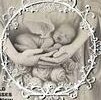The choice of attire for a loved one who has died can be an important and deeply personal part of the funeral planning process. It is also a great opportunity to reflect the deceased individual’s personality and taste. The clothing choices may be formal or casual, and can be tailored to align with cultural customs and the deceased’s personal style.
In most cases, the traditional clothing that can be worn for a burial or cremation includes items that are familiar to the person. This can include a favorite sports jersey or a nightdress that they enjoyed wearing in life, and can be reassuring for the grieving family as it is an indication that they continue to care for their loved one even in death.
A suit is a popular choice for men, as are a shirt and tie or trousers. For women, a smart dress is typically the preferred option.
Some modern burial wear is designed with false shirt fronts and other embellishments that allow it to resemble day clothes, for example suits or dresses with a collar and tie. Such clothes are often used for green funerals in woodland or natural burial grounds, where the deceased is buried in earth rather than a casket.
Burial gowns are often made of cloth, such as a cotton or linen fabric. This is usually washed before use to remove any stains or marks. In addition, such cloth is a good material to use for a garment that will be placed on the body as it can be easily pinned into place and not shift.
In many cases, the funeral director will provide the garment that your loved one is buried in. They will normally offer the option of a garment that resembles smart nightwear, or pyjamas if the deceased is being buried at home. However, this may not always be the case, and you can often request a different garment, either because your loved one prefers something specific or because of religious considerations.
For babies who are stillborn or die shortly after birth, there are special clothes that can be worn to be buried or cremated. Such clothes are often modeled after hospital gowns and are often gifted to parents via charitable schemes run by hospitals and funeral homes. These beautiful dresses allow families to bury their tiny angels in a gown or wrap that is personal and meaningful to them, as opposed to the generic hospital blankets or clothing that would otherwise be used.
The founder of Real Imprints, a domestic angel gown project, came face to face with the need for these garments after she took over her local project from another woman and went on a medical mission trip to Ghana, Africa. Whilst there, she was asked to attend a birth that resulted in a stillborn baby. The father was unsure of what to do, and told the nurses at the hospital that he did not have anything for his child to be buried in.
